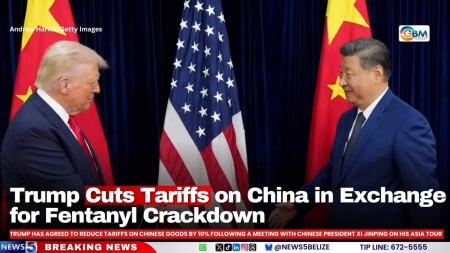How to Evaluate a Trading Signal Provider – Trading signals have become an essential tool for traders across forex, cryptocurrency, and stock markets. They offer insights into when to buy, sell, or hold assets, saving traders valuable time and effort in conducting technical and fundamental analysis. However, with so many providers available today, not all of them are trustworthy or effective. Many traders have fallen victim to unverified services that promise unrealistic returns but fail to deliver. Knowing how to evaluate a trading signal provider is crucial for protecting your capital and ensuring that you partner with a reliable source of information. By following a careful evaluation process, traders can filter out poor-quality services and make informed choices that support long-term success.
How to Evaluate a Trading Signal Provider
Understanding the Importance of Evaluation
Signal providers vary widely in terms of accuracy, transparency, and professionalism. While some deliver consistent and reliable signals backed by strong analysis, others may simply recycle information or manipulate results to attract unsuspecting beginners. Evaluating a provider before subscribing prevents traders from wasting money on ineffective services and protects them from unnecessary risks. It also allows traders to match their personal trading style with the type of signals being offered. Whether you are a conservative trader looking for long-term swing trades or a more aggressive scalper, choosing the right provider requires careful consideration.

How to Evaluate a Trading Signal Provider – Transparency of Results
The first step in assessing a provider is reviewing their trading history. Reliable providers should present transparent performance records, preferably verified by third-party platforms that track trades in real time. Many reputable providers use independent auditing systems to confirm their win rates and overall profitability. Be cautious of providers that only showcase screenshots, selective trades, or claims of 100% accuracy, as these are often signs of manipulation. Transparency also extends to risk disclaimers. Any genuine provider will acknowledge that trading involves risks and that no signal can guarantee profits.

How to Evaluate a Trading Signal Provider
How to Evaluate a Trading Signal Provider – Consistency and Accuracy
A good trading signal provider demonstrates consistent performance over time. While occasional losses are inevitable, what matters is the overall success rate and whether the signals show a positive long-term return. Traders should look for providers who avoid erratic results or extreme volatility in their performance. Accuracy should also be judged based on realistic expectations. A provider claiming consistent returns of 5–15% monthly may be more reliable than one advertising extraordinary profits. Evaluating the provider’s history over several months or years gives a clearer picture of whether they can deliver sustainable results.

Delivery Method and Timeliness
The effectiveness of trading signals depends heavily on how quickly they reach the trader. In fast-moving markets, a delay of just a few minutes can turn a profitable signal into a loss. Therefore, it is essential to evaluate the provider’s delivery method. Signals should ideally be sent through instant communication platforms such as mobile apps, SMS, or Telegram groups. The instructions must be clear, concise, and actionable. For beginners, detailed signals that specify entry prices, stop-loss levels, and take-profit targets are especially helpful. Providers who offer multiple delivery methods show professionalism and consideration for different user needs.

Reputation and Community Feedback
Another key factor in learning how to evaluate a trading signal provider is checking their reputation. Traders should research user reviews, testimonials, and feedback on forums or social media platforms. Communities such as Reddit and specialized trading groups often share honest experiences with specific providers. While one or two negative reviews may not be conclusive, repeated complaints about late signals, inaccurate predictions, or poor customer service are red flags. Conversely, providers with positive reputations are often backed by active communities where users share their trading experiences and learn from one another.
Compatibility with Your Trading Style
Not every trading signal service will align with every trader’s goals. For example, a provider who specializes in short-term scalping strategies may not be suitable for someone with a small trading account or limited time to monitor charts. Similarly, long-term swing traders may find rapid intraday signals overwhelming. When evaluating a provider, traders should compare the signal strategies with their own preferences, available time, and risk tolerance. A good provider will often specify the type of trading they focus on, such as forex, crypto, day trading, or swing trading. Choosing a provider aligned with your style ensures better results and less stress.
Risk Management Practices
Responsible providers emphasize not only when to enter and exit trades but also how to manage risk. Signals that include stop-loss and take-profit levels demonstrate that the provider is focused on protecting capital as much as generating profit. Beginners should avoid providers who simply give buy or sell calls without clear risk management instructions. The inclusion of proper risk-reward ratios is also a sign of professionalism. Providers who focus on disciplined risk management help traders build sustainable strategies rather than chase unrealistic short-term gains.
Pricing and Value for Money
The cost of subscribing to a signal provider varies widely. Some services charge a monthly fee, while others operate on profit-sharing models or offer free signals as part of a community. When evaluating pricing, traders should consider whether the value provided justifies the cost. A higher-priced service may still be worthwhile if it consistently delivers reliable results and educational resources. On the other hand, extremely cheap or free providers should be approached with caution, as they may lack the quality control necessary for long-term trading success.
Combining Signals with Education
One of the most valuable aspects of evaluating a provider is determining whether they also contribute to your trading education. The best providers not only send signals but also explain the reasoning behind their recommendations. This helps traders learn technical and fundamental analysis over time. In 2025 and beyond, signal providers that offer webinars, tutorials, or educational communities stand out because they empower traders to become independent rather than dependent on external recommendations.
Conclusion
Knowing how to evaluate a trading signal provider is one of the most important skills any trader can develop. It prevents unnecessary losses, protects against scams, and ensures that you align with a provider who supports your trading journey. By focusing on transparency, consistency, delivery methods, reputation, compatibility, risk management, and pricing, traders can make informed decisions. A reliable signal provider should not only guide trades but also contribute to your growth as a trader. Ultimately, the goal is to use signals as a supportive tool while continuing to develop independent skills that ensure long-term success in any financial market.








